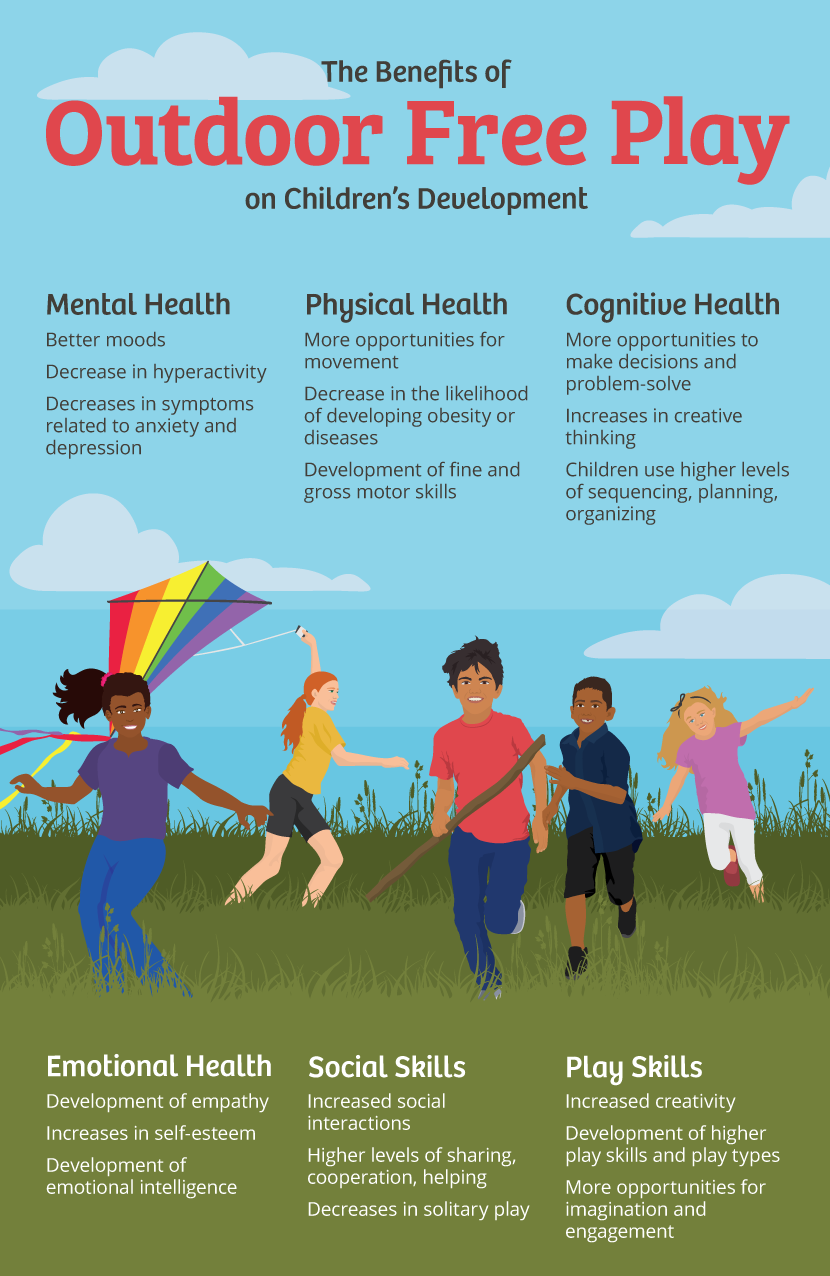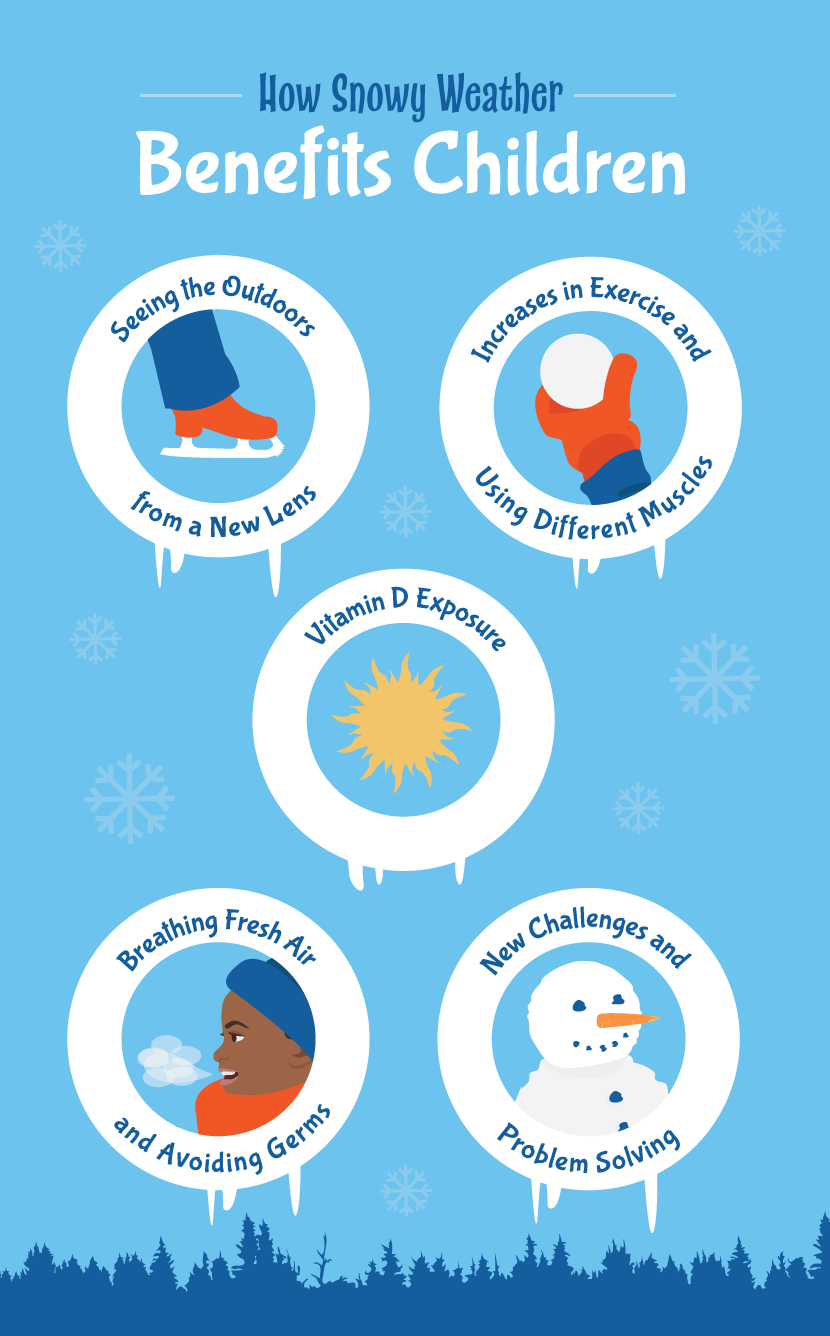Outdoor Learning

Here are some other benefits of outdoor play:
1. Help your child sleep better at night
Research shows that children sleep better at night if they’ve had some fresh air and sunshine during the day. Definitely worth a walk or play outdoors to help your baby sleep better.
2. Outdoor play is a fun way to learn
Getting outdoors to play is a brilliant sensory experience for toddlers and young children. There is so much for them to see, explore and learn. The changing nature of the outdoors makes it an incredibly stimulating and multi-sensory place to play. This is important as young children learn and gain experience through all their senses.
3. Developing motor skills
Young children need the opportunity to use their whole body and develop their gross motor skills. They have space to run and jump outside. They can also develop their fine motor skills as they pick up natural treasures like leaves and fir cones.
4. Encourages a healthy lifestyle
Getting outdoors with your toddler/young child can help them burn off some energy and encourages a healthy lifestyle. Through physical activity and challenges, being outdoors helps children sleep, eat, and live more healthily. This encourages them to form healthy habits for life.
5. Care for the environment
Playing outdoors is a brilliant way to get out in nature and become aware of the environment. Children who gain knowledge and appreciation of nature are more likely to become environmentally aware adults.
6. Positive impact on the whole family
It’s amazing how fresh air can blow away the cobwebs and make a world of difference to how you feel as a parent. Even a short walk can do the world of good for the whole family. Especially on days after a sleepless night or when your child is feeling grumpy or grizzly at home.
7. Make new friends
Getting outside is also a good opportunity for parents to get some gentle exercise and meet friends.
OUTDOOR PLAY IN COLDER MONTHS

As winter and cold weather approaches, children’s play is often limited to the indoors. Adult fears about safety and attitudes toward exposure to cold weather are the barriers that prevent children from accessing play in winter months. It is common to hear adults say that “my child will not like being in the cold weather,” or “the cold is too dangerous to play in.” Let’s remember to focus on the importance of children’s play, regardless of the season.
How Snowy, Cold Weather Benefits Children’s Development and Health
1. Children get to see the outdoors through a new lens
During the summer months, children become used to the warm, green climate that the season has to offer. After the change in season or the first snowfall, children view their environment through a different lens: fallen leaves, brown grass, snow, ice. This new lens enables them to imagine the outdoors differently and to be creative and play in different ways.
2. Increases in Exercise and Using Different Muscles
The winter months provide us with different ways of moving our bodies, such as sledding, walking up a snow hill, or building a snowman. Our larger muscles are put to great use in the winter months due to the challenges that snow provides. This large-muscle use and increase in physical activity support children’s gross motor development and overall health.
3. Getting Fresh Air and Avoiding Bacteria
Most adults associate the winter months with getting colds and illnesses such as the flu. However, it is not the cold weather that necessarily causes colds and flus – it is increased exposure to indoor environments where bacteria and viruses live. For example, during the winter months, you turn on your home’s heating and venting systems. The bacteria and viruses within your home are continuously being moved around inside. Adults and children who spend long periods of time in a heated and poorly ventilated home, without exposure to fresh air, can easily pass germs to each other.
4. New Challenges and Problem-Solving
Weather that we consider “messy” provides environments and materials that are inspiring and fun for children; for example, patches of ice, large snow hills, and trees covered in snow. These environments provide children with opportunities for new challenges, such as sliding down the ice patch and climbing a snow hill. Engagement with outdoor environments in the winter provokes new problem-solving skills – “How can I slide down this slope without falling?” “How fast can I run up this snow hill?” The ever-changing environments that the winter months have to offer provide children with the challenges that they so often crave.
5. Vitamin D Exposure
When we stay indoors during the winter, we are not only missing out on play, but also on necessary vitamins that the outdoor environment gives us. Children get vitamin D through sun exposure, and absorb it even though the sun is not as warm in the winter. Vitamin D helps regulate mental and emotional moods, doing so by increasing serotonin levels in the brain. Serotonin plays an important role in regulating mood and keeping us happy. So the more exposure you have to the sun, the higher your serotonin levels will be. It is recommended that you get at least half an hour of playtime outdoors in the winter.
